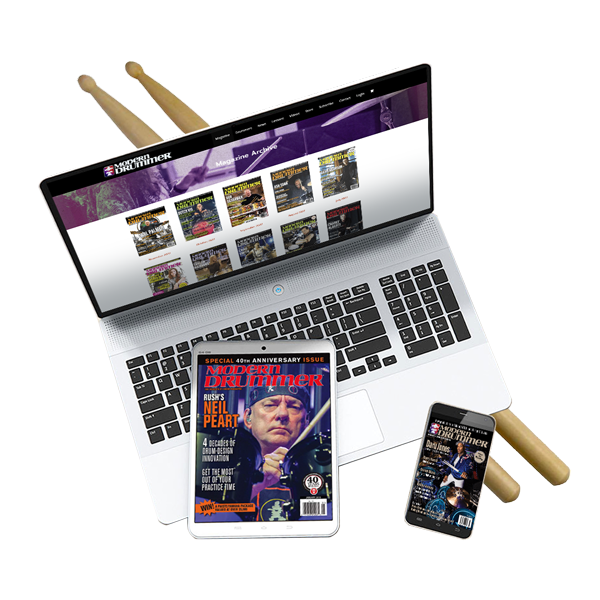August September 1979 – Volume 3 • Number 4
Articles in August September 1979
Jimmy Cobb: Seasoned Sideman
Jimmy Cobb: Seasoned Sideman Story and photos by Rick Mattingly After talking to Jimmy Cobb and hearing him play, I was impressed both by the man, and the musician. His musical credentials are extensive. From 1958-1962 he was a member…
Driver's Seat: Learning The Chart and Phrasing
by Butch Miles Last time, we discussed the value of underplaying and keeping the energy level high. This article deals with two of the most important of all the nine tips I've suggested: learning the chart and phrasing.LEARN THE CHARTI…
Strictly Technique: Understanding Flams
Strictly Technique Understanding Flams by Rupert Kettle The ability to freely and easily embellish rhythmic figures with single grace notes and create "flams," is to me one of the earmarks of an accomplished snare drummer. Such accomplishment does not always…
Reflections: Don Lamond
Reflections: Don Lamond by Gabe Villani "I was fascinated by the drums. I was always banging on things but I couldn't figure out how people rolled on drums. How could they play fast enough to produce a continuous sound?" When…
Jazz Drummer's Workshop: Reading And Jazz Interpretation
by Ed Soph A drummer's interpretive powers grow once he has established the foundational techniques of hands and feet. Coordination, which means hearing something and spontaneously reacting to it in a musical manner, develops. It is then that further technical…
South Of The Border: The Mambo
South Of The Border The Mambo by Norbert Goldberg Ranking among the most popular Latin rhythms is the mambo. This rhythm, which originated in Cuba, has had much success on the dance floors of the world because of its exciting,…
Rock Perspectives Rock 'N' Time
by David Garibaldi The basic role of the drummer has always been that of a timekeeper. Today's music is no exception. I believe that basic role has become clouded in the minds of many due to the high technical level…
Billy Cobham
Billy Cobham is one of the strongest innovative forces on the drumming scene today. Both his technique, and drum set-up are awesome.We met at Starr Recording Studios where Billy was to record an instructional tape for the Tama Drum Company.…
Rudimental Symposium: Back-sticking
Rudimental Symposium Back-sticking by Mitch Markovich Years ago, back-sticking was almost unknown in most drumming circles and when it was used, it was usually done in a rather simple way. Since that time, back-sticking has become more widely used and…
August September 1979 - Volume 3 • Number 4
Billy Cobham, Elvin Jones, Jimmy Cobb, Don Lamond




